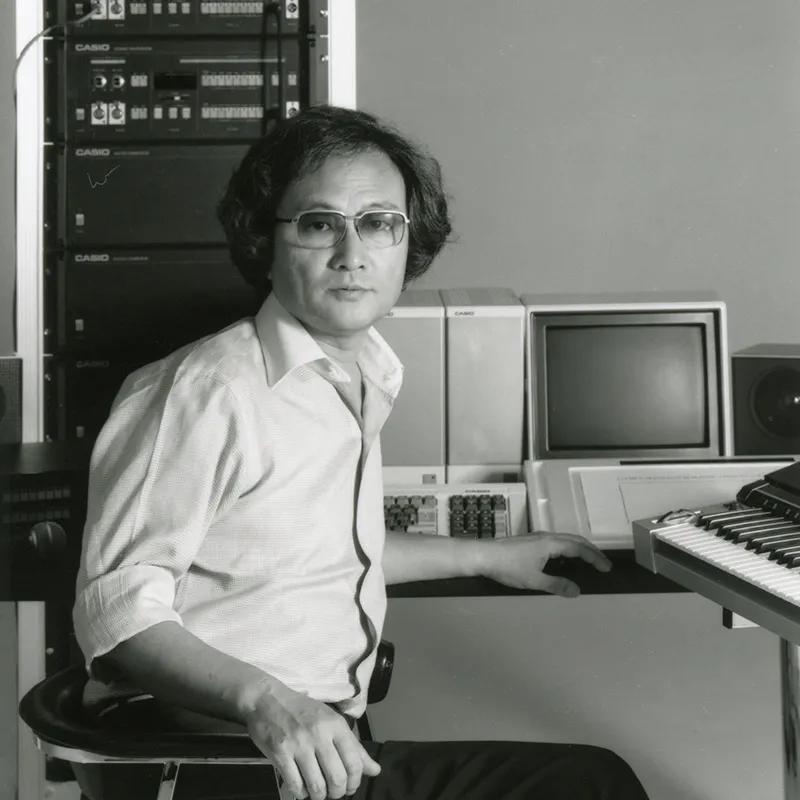Isao Tomita
 JPNAsian, Japanese Folk, Downtempo
JPNAsian, Japanese Folk, Downtempo

 JPNAsian, Japanese Folk, Downtempo
JPNAsian, Japanese Folk, DowntempoIsao Tomita, a pioneer of electronic music from Japan, was well-known for his distinctive fusion of contemporary synthesizers and electronic instruments with traditional Japanese folk music. He was born in Tokyo in 1932, and he began his musical career as a composer for television and film before focusing on creating music that fused traditional Japanese melodies with cutting-edge technology.
Tomita's music was known for its dreamy soundscapes, sophisticated orchestration, and ability to seamlessly combine traditional and avant-garde elements. Numerous artists and composers were inspired to follow in his footsteps by his avant-garde approach to music creation, which contributed to the globalization of electronic music in Japan and other countries.
Tomita stayed true to his roots throughout his career, incorporating traditional Japanese folk music's ageless melodies and rhythms into his songs. He is one of the most admired and acclaimed musicians in the annals of Asian music because of his legacy as a pioneer of electronic music and a defender of traditional Japanese culture.
Isao Tomita is a Tokyo-based Japanese folk artist who has written a number of well-known songs throughout the course of his career. The following are a few of his best compositions: "Suite Bergamasque: Clair de Lune, No. 3," "Arabesque No. 1," "Aranjuez," "Reverie," "Solveig's Song," "Children's Corner: No. 4: Snowflakes Are Dancing," "Suite bergamasque, L. 75: III. Clair de Lune," "Space Fantasy," "The Sea Named Solaris," and "
Particularly well-known composition "Clair de Lune" was reworked by Tomita using electronic sounds. The outcome is a melancholy and lovely song that has found a following among listeners all around the world. Another well-known song that demonstrates Tomita's use of synthetic sounds and his capacity to convey an otherworldly atmosphere in his music is "Space Fantasy."
Since Tomita uses synthesizers and other electronic instruments, his work has been characterized as "a unique blend of classical and electronic music," distinguishing him from other Japanese folk musicians. His legacy continues to inspire musicians today, and his music has influenced the growth of electronic music in Japan and around the world.
Isao Tomita has composed a number of well-known songs over the course of his career, including "Suite Bergamasque: Clair de Lune, No. 3," "Arabesque No. 1," "Aranjuez," "Reverie," "Solveig's Song," "Children's Corner: No. 4: Snowflakes Are Dancing," "Suite bergamasque, L. 75: III. Clair de Lune," " His distinctive fusion of classical and electronic music helped to shape the growth of electronic music in Japan and other countries, and his legacy continues to influence musicians today.
"Yuan Shi Wu Yu Huan Xiang Jiao Xiang Hui Juan (Orchestra recording version) (2021)," the most recent album by renowned Japanese composer and electronic music pioneer Isao Tomita, is an orchestral rendition of his well-known "The Tale of Genji, Symphonic Fantasy" album. The new CD combines conventional Japanese music with contemporary orchestral arrangements, showcasing Tomita's distinct aesthetic and originality. For both followers of Japanese traditional music and modern music, the CD is a tribute to Tomita's ongoing history as a forerunner in electronic and orchestral music.
Tomita has released his most recent album as well as a new single titled "huigiyuasuketo Yu Sheng Jie Xian Xuan Shou FStema [Tian toDi to] orizinarukaba - Single (2021)." The song, a rendition of the free skate program theme song for figure skater Yuzuru Hanyu, combines traditional Japanese instrumentation with Tomita's distinctive electronic sound. The song demonstrates Tomita's musical diversity and his capacity to modify his songs to fit various genres and styles.
"ohotsukuHuan Xiang (2016)," Tomita's prior album, is equally noteworthy. The CD pays homage to the Hokkaido region of Japan's natural beauty and culture and includes unique pieces by Tomita that perfectly encapsulate the local traditions and sceneries. Fans of Japanese music and culture must listen to this CD since it is a monument to Tomita's commitment to maintaining and promoting Japanese culture through his music.
Isao Tomita's most recent album and single are testaments to his influence on the Japanese music scene and beyond as they demonstrate his never-ending originality and innovation as a musician. Tomita's most recent recordings will appeal to fans of electronic music, modern music, and traditional Japanese music.
The Japanese folk musician Isao Tomita has worked with a number of well-known musicians. He and Joaquin Rodrigo worked together to produce the masterpiece "Aranjuez." A distinctive and calming melody was produced as a result of the fusion of Rodrigo's classical guitar techniques with Tomita's artistic expression. Through this collaboration, Tomita showed his talent for fusing several musical styles to create something fresh.
A notable partnership was that with Claude Debussy, which produced "Suite bergamasque, L. 75: III. Clair de Lune" and "Children's Corner, L. 113: IV. The Snow Is Dancing." Debussy's classical music style and Tomita's electronic elements blended beautifully to create a lovely synthesis of the past and present. These partnerships demonstrated Tomita's artistic diversity and his capacity to meld many musical styles.
Another illustration of Tomita's distinctive approach to music is his cooperation with Richard Wagner and Richard Strauss on "Space Fantasy". The futuristic, electronic sounds of Tomita coupled with the classical works of Strauss and Wagner gave listeners a fresh, engaging experience. Tomita's capacity to think outside the box and push musical boundaries was proved through this cooperation.
Overall, Isao Tomita's associations with many musicians demonstrated his musical variety and innovation. His skill in fusing several musical styles produced remarkable pieces that continue to inspire and have an impact on musicians all over the world.